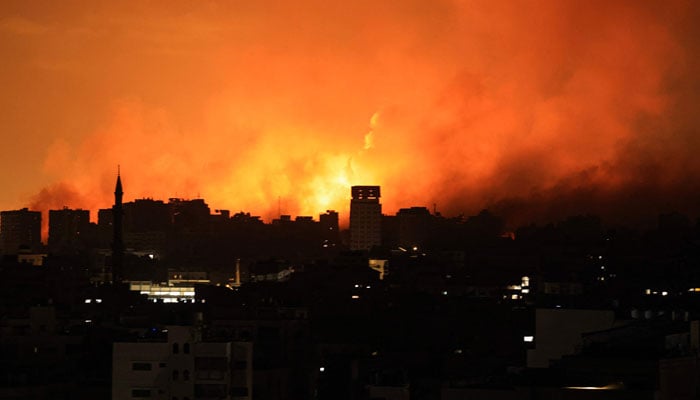Alarm raised over Israel using white phosphorus in Gaza and Lebanon

The Human Rights Watch (HRW) has sounded the alarm over Israel’s alleged use of white phosphorus munitions in its recent military operations in Gaza and Lebanon, igniting international concern over the potential consequences of these actions.
As tensions escalate in the region, the HRW’s report states, “The use of white phosphorus in Gaza, one of the most densely populated areas in the world, magnifies the risk to civilians and violates the international humanitarian law prohibition on putting civilians at unnecessary risk.”
Israel’s military responded to the accusations by claiming they were “currently not aware of the use of weapons containing white phosphorus in Gaza.” However, they refrained from providing any comment on the allegations regarding their use of these munitions in Lebanon.
This is not the first time Israel has faced allegations of using white phosphorus in Gaza. Similar incidents occurred during the 2008-2009 conflict, resulting in civilian casualties and international criticism. HRW’s report rekindles these concerns and draws attention to the ongoing use of this incendiary substance.
The HRW substantiated its claims with video evidence from Lebanon and Gaza, recorded on October 10 and 11, showing “multiple airbursts of artillery-fired white phosphorus over the Gaza City port and two rural locations along the Israel-Lebanon border.”
White phosphorus is not outright banned, but using it in densely populated civilian areas, such as Gaza, may constitute a violation of international humanitarian law.
Lama Fakih, the Middle East and North Africa Director at the HRW, underscored the risk, saying, “Any time that white phosphorus is used in crowded civilian areas, it poses a high risk of excruciating burns and lifelong suffering.”
“White phosphorous is unlawfully indiscriminate when airburst in populated urban areas, where it can burn down houses and cause egregious harm to civilians.”
Upon exposure to atmospheric oxygen, white phosphorus ignites and continues to burn until it lacks oxygen or is exhausted. This chemical reaction generates intense heat, reaching temperatures of approximately 815°C/1,500°F, as detailed in the report.
The report also highlighted that white phosphorus, upon contact, possesses the potential to induce severe burns, both thermally and chemically, as it permeates deep into the body owing to its high fat solubility.
Moreover, it pointed out that fragments of white phosphorus can exacerbate injuries, persisting even after medical treatment and potentially entering the bloodstream, leading to multiple organ failure.
Furthermore, the report mentioned that in some instances, wounds that were previously treated may reignite upon exposure to oxygen when dressings are removed. Even relatively minor burns caused by white phosphorus often have fatal outcomes. Survivors may contend with extensive scarring that constricts muscle tissue, resulting in physical disabilities.
In addition to the physical consequences, survivors also grapple with the trauma of the attack, the painful treatment process, and the enduring impact of disfiguring scars. These factors can lead to psychological distress and social isolation.
The conflict began when Hamas initiated Operation Al-Aqsa Flood, a multi-pronged surprise attack on Israel that included rocket launches and infiltrations via land, sea, and air. The Hamas retaliation was triggered by the alleged storming of the Al-Aqsa Mosque in East Jerusalem and escalating violence against Palestinians by Israeli settlers.
Israel’s response was Operation Swords of Iron, targeting Hamas within the Gaza Strip. The situation has further deteriorated as Israel cut water and electricity supplies to Gaza, exacerbating the already dire living conditions for its residents.
This week alone, the violence has claimed the lives of at least 1,300 people, with over 1,500 Palestinians losing their lives. The situation has also intensified hostilities between Israel and Lebanon’s Hezbollah group.
As the conflict persists, both Palestinian and Israeli casualties continue to rise, including children among the victims. The situation remains a cause for international concern, with world leaders and organisations closely monitoring the situation and its impact on civilians caught in the crossfire.

